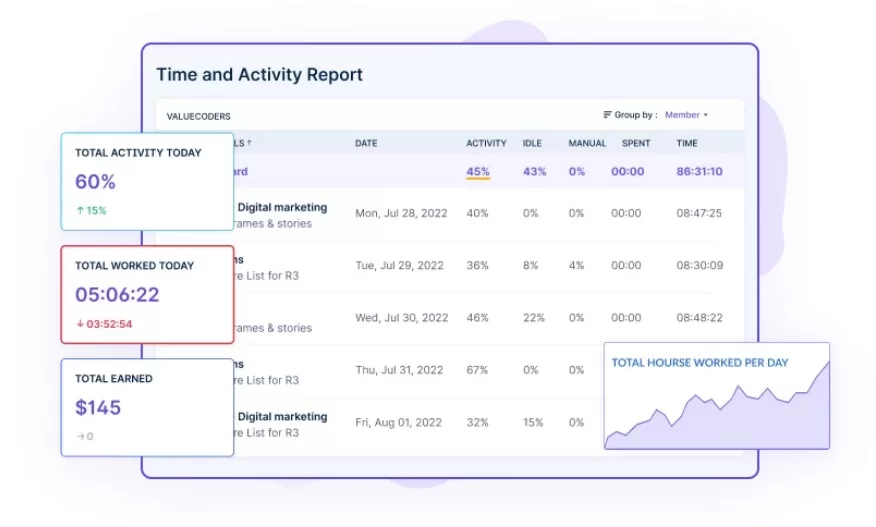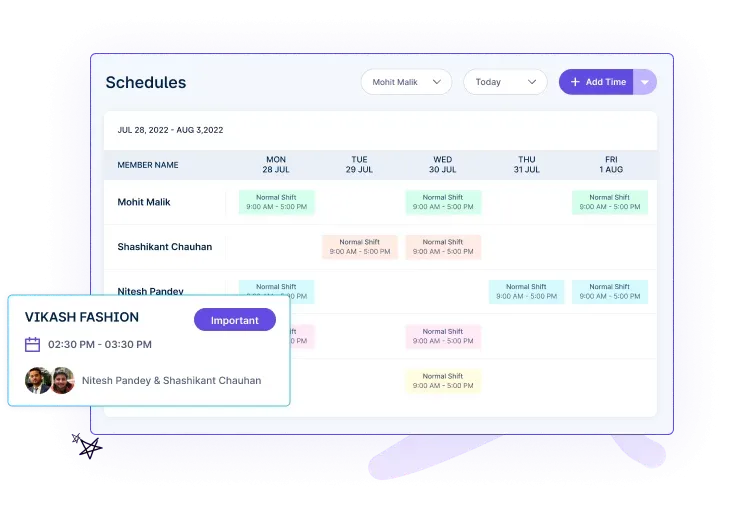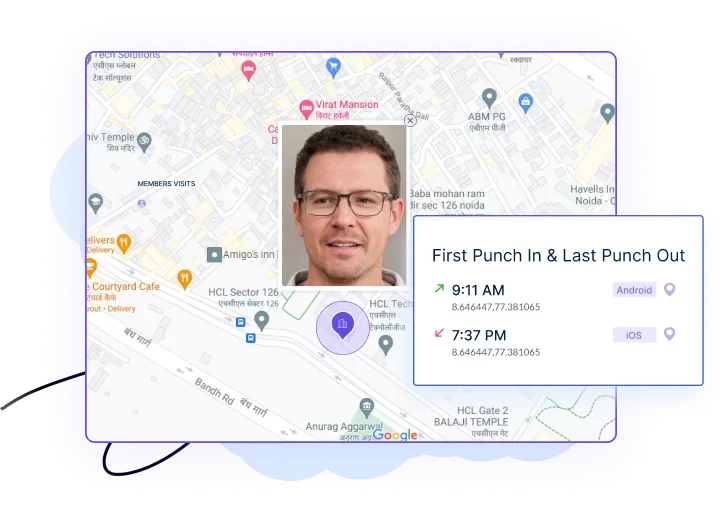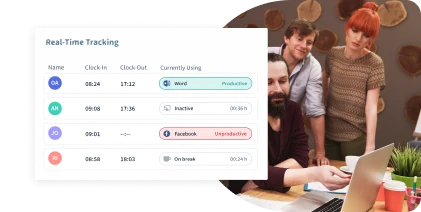Table of Contents
Are you looking for ways to ensure your organization runs smoothly and efficiently?
Do you want to ensure you have the right people, with the right skills, in the right positions?
If so, then workforce planning is the solution!

With such increasing demand for workforce management services, it is evident that organizations recognize the importance of effective workforce planning.
In this guide, we will take you on the informative journey of workforce planning, starting from:
- Defining workforce planning
- The difference between short-term and long-term workforce planning
- The Purpose of Workforce Planning
- Benefits of Workforce Planning
To challenges and solution that comes with the process!
So join us on this journey and learn everything you need to know about workforce planning!
Let’s get started by understanding.
What Is Workforce Planning?
Workforce planning is an organization’s strategic process to plan the workforce to fulfill its overall business goals and objectives.
It involves analyzing the organization’s current & future workforce requirements & developing strategies to ensure that the right people with the right skills are in the right positions at the right time.
At its core, workforce planning aims to forecast & address gaps between the demand for talent and the available supply within the organization. It involves:
- Assessing the current workforce capabilities
- Identifying skill gaps
- Projecting future needs based on business growth
- Technological advancements
- Industry trends
The Difference Between Short-Term And Long-Term Workforce Planning
Short-term and long-term workforce planning are two distinct approaches to addressing workforce needs based on different time horizons.
Here’s an explanation of the difference between the two:
Short-Term Workforce Planning:
Short-term workforce planning focuses on an organization’s immediate or near-future needs, typically within a timeframe of up to one year.
Key characteristics of short-term workforce planning include:
1) Immediate Resource Allocation: Short-term planning involves allocating the existing workforce efficiently to meet current workload demands
2) Operational Continuity: The focus is on maintaining business operations without disruptions by addressing immediate skill gaps or shortages
3) Tactical Adjustments: Adjustments may be made to staffing levels, workload distribution, or skills deployment to respond to short-term fluctuations in demand
4) Limited External Hiring: Short-term planning often emphasizes internal resources and optimizing the current workforce to fulfill immediate needs
Examples of short-term workforce planning initiatives include:
- Adjusting schedules
- Overtime allocation
- Cross-training employees to cover immediate skill gaps
- Utilizing temporary or contingent workers to handle workload spikes
Long-Term Workforce Planning:
Long-term workforce planning takes a more strategic and forward-looking approach, typically covering a timeframe of multiple years (e.g., three to five years or more).
Key characteristics of long-term workforce planning include:
1) Strategic Alignment: Long-term planning aligns the workforce with the organization’s strategic objectives, considering business growth, market trends, technology advancements, and demographic changes.
2) Talent Acquisition And Development: It involves proactive initiatives to attract, recruit, and develop talent with the required skills, competencies, and expertise to support future organizational needs
3) Succession Planning: Long-term planning includes identifying high-potential employees and creating succession plans to fill critical positions as they become vacant due to retirements, resignations, or promotions.
4) Strategic Workforce Analysis: Analysis of future talent gaps and supply-demand imbalances to address potential skill shortages or surpluses in advance.
5) External Hiring And Workforce Expansion: Long-term planning often involves external recruitment strategies, such as hiring new talent or exploring partnerships, to expand the workforce and meet anticipated future demands.
Examples of long-term workforce planning initiatives include-
- Talent pipeline development
- Leadership development programs
- Workforce analytics to identify future skills required
- Employer branding strategies to attract top talent
- Training programs to develop critical competencies needed for future roles
Now let’s take a look at
The Purpose Of Workforce Planning
Workforce planning has multiple purposes, the most important of which is to ensure the right people are in the right positions at the right time.
Workforce planning can fulfill several crucial roles in an organization, including:
Aligning Workforce With Organizational Goals:
Workforce planning helps organizations prioritize and align their workforce needs with their strategic objectives.
By understanding the current and future demands of the business, workforce planning can assist in the following:
- Identifying the skills and competencies required to achieve organizational goals
- Ensuring the workforce is equipped with the necessary skills to support strategic initiatives
- Aligning recruitment, training, and development efforts with organizational priorities
Identifying Current & Future Workforce Needs:
Workforce planning enables organizations to assess their current workforce and anticipate future needs. This involves:
- Conducting a comprehensive analysis of the existing workforce, including skills, experience, and demographics
- Identifying potential gaps between the supply and demand of talent
- Anticipating future workforce requirements based on business projections and industry trends
Addressing Skills & Talent Gaps:
Workforce planning allows organizations to bridge skill and talent gaps within their workforce. This involves:
- Conducting skills assessments and competency mapping to identify areas of improvement
- Implementing targeted training and development programs to enhance employee skills
- Identifying high-potential employees and creating succession plans to fill critical roles
Managing Costs &Budgets:
Workforce planning helps organizations optimize their resource allocation and manage costs effectively. This includes:
- Evaluating the financial resources available for workforce planning initiatives
- Assessing the cost-effectiveness of different talent acquisition and development strategies
- Optimizing workforce utilization to minimize unnecessary expenses
Now here are the

Benefits Of Workforce Planning:
Improved Efficiency And Productivity:
- Strategic allocation of resources based on business needs
- Optimized utilization of skills and competencies
- Streamlined workflows and processes for increased productivity
Resource Optimization:
- Right-sizing the workforce to avoid overstaffing or understaffing
- Identifying skill gaps and training opportunities to maximize resource utilization
- Cost-effective allocation of resources based on demand and budgetary constraints
Enhanced Employee Engagement And Retention:
- Development opportunities and career pathways for employees
- Alignment of employee skills with job requirements, increasing job satisfaction
- Recognition of employee contributions, fostering a positive work environment
Better Project Management:
- A clear understanding of talent requirements for project success
- Efficient allocation of resources for project teams
- Proactive identification and mitigation of potential skill shortages
Higher Return On Investment:
- Targeted recruitment and development efforts build stong base
- Efficient workforce utilization leads to cost savings
- Increased productivity and performance contribute to higher profitability
Now let’s understand
Process Of Workforce Planning
Define Organizational Goals & Objectives:
The first step in the workforce planning process is to clearly define the goals & objectives of the organization. This involves:
- Identifying the specific goals that the organization wishes to achieve
- Documenting the resources and skills required to meet these goals
- Assessing the current workforce capabilities and identifying any gaps
- Making strategic alignment decisions based on the identified needs
Analyze The Current Workforce And Identify Gaps:
Once the organization’s goals have been defined, the next step is to analyze the current workforce to identify gaps. This involves:
- Reviewing the skills and experience of the employees
- Investigating the demographic profile of the workforce
- Identifying any required skills that are currently missing or in short supply
This analysis helps an organization identify any areas where training or recruitment policies may need to be changed for smooth project execution.
Forecast Future Workforce Needs Based On Business Projections:
After identifying gaps in the current workforce, it is necessary to project future workforce requirements based on business growth, technological advancements, and industry trends. This involves:
- Developing hypotheses about which skills will be in high demand
- Evaluating the potential market for skilled labor
- Conducting a comprehensive analysis of current manpower availability worldwide
- Projecting future workforce needs based on current and projected trends
Implement The Workforce Plan And Monitor Progress:
Once the future workforce needs have been determined, the next step is to implement a workforce plan. This involves:
- Identifying the resources and skills required to meet projected demands
- Planning recruitment and training efforts
- Determining the budgetary requirements
- Assigning the right task with the right schedule to the right people
- Executing the plan in a timely and cost-effective manner
Evaluate The Effectiveness Of The Plan And Make Adjustments As Needed:
After the workforce plan has been successfully implemented, evaluating its effectiveness and making any necessary adjustments is important. This involves:
- Conducting periodic reviews of employee performance
- Determining whether the workforce plan is meeting projected requirements
- Making changes to the plan as needed
- Follow up on employees’ progress to ensure they are fully assimilated into the organization
As we are familiar with the process of workforce planning, it is now time to explore:
Optimizing Workforce: Challenges And Solutions In Workforce Planning
Workforce planning has its fair share of challenges and pitfalls despite its numerous benefits.
This section will explore some common challenges organizations face and discuss effective solutions to address them.
Inefficient Time Tracking & Attendance Management:
Tracking and managing employee attendance can be a time-consuming and error-prone task. Manual processes may lead to inaccuracies, delays, and inconsistencies.
Solution:
1) Automated Time Tracking:

Implementing automated time tracking systems can streamline the process by accurately capturing employee work hours and attendance data.
2) Geolocation and GPS Tracking:
![]()
Utilizing geolocation and GPS technologies allows organizations to track employees’ locations, ensuring they are where they need to be during working hours.
3) Attendance Reports With Selfie Validation:

Incorporating selfie validation in attendance reports adds an extra layer of verification, reducing the possibility of proxy attendance.
Lack Of Visibility And Accountability In Employee Operations:
Without proper visibility into employee activities and performance, it becomes challenging to assess productivity levels and identify areas for improvement.
Solution:
1) Activity Monitoring and Screenshots:

Monitoring employee activities and capturing screenshots periodically provides insights into their work patterns, enabling managers to track progress and offer guidance.
2) App and Website Usage Tracking:

Tracking the applications and websites accessed by employees during working hours helps identify potential time-wasting activities and ensures adherence to company policies.
3) Employee Productivity Reports:

Generating regular productivity reports based on key performance indicators allows managers to evaluate individual and team performance, facilitating targeted feedback and coaching.
Difficulty In Scheduling and Shift Management:
Balancing employee schedules, accommodating shift preferences, and managing last-minute changes can be complex and time-consuming, leading to scheduling conflicts and operational inefficiencies.
Solution:
1) Flexible Shift Planning:

Implementing software solutions that offer flexible shift planning capabilities enables employees to input their availability and preferences, allowing for efficient scheduling.
2) Shift Reminders and Notifications:

Automated shift reminders and notifications help employees stay informed about their schedules and reduce the chances of missed shifts or confusion.
3) Real-Time Schedule Updates:

Enabling real-time schedule updates and notifications allows managers to swiftly communicate changes, ensuring that employees are aware of any adjustments to their shifts.
Employee Engagement:
Engaging and motivating employees is crucial for maintaining high productivity and job satisfaction. However, disengaged employees can impact overall workforce performance and hinder successful planning.
Solution:
1) Customizable Reports and Dashboards:

Providing employees access to personalized reports and dashboards that showcase their performance metrics fosters transparency and encourages self-improvement.
2) Workforce Analytics and Insights:

Leveraging workforce analytics tools help identify patterns and trends in employee engagement, enabling organizations to implement targeted interventions and initiatives.
3) Integration with HR and Payroll Systems:
Integrating workforce planning tools with HR and payroll systems enhances data accuracy and automates employee recognition programs and performance-based incentives.
By recognizing and proactively addressing these challenges and implementing appropriate tools and solutions, organizations can:
- Enhance their workforce planning efforts
- Achieve better productivity
- Deliver employee satisfaction
Introducing Workstatus: Your One-Stop Solution for Streamlined Workforce Management

Workforce planning can be complex, requiring organizations to overcome various challenges related to:
- Time tracking
- Attendance management
- Employee engagement
- Scheduling
- Reporting
To simplify this process and empower organizations with comprehensive workforce management capabilities, a solution stands out: Workstatus.
Workstatus is a cutting-edge workforce management software designed to address the challenges faced by modern organizations in effectively managing their workforce. With a wide range of features & functionalities, such as:
- Time Tracking
- Productivity Tracking
- Workforce Management
- Employee Activity Monitoring
- Active Screenshot Capture
- GPS Tracking
- Geofencing
- Selfie Validation
- AI-Powered Reports
- Central Dashboard
- Project Management
Workstatus serves as a one-stop solution for streamlining workforce operations and optimizing productivity.
By leveraging the features and functionalities of Workstatus, organizations can enhance operational efficiency, boost employee engagement, and optimize productivity.
Next Step
In conclusion, workforce planning is a strategic process that organizations employ to ensure they have the right people with the right skills in the right positions at the right time.
It involves analyzing and forecasting future workforce needs, identifying gaps between current and future requirements, and developing strategies to address them. Organizations can:
- Optimize productivity
- Mitigate risks
- Align their human resources with their overall business objectives by effectively planning their workforce
To take your first step towards better workforce planning, you can opt for Workstatus, the one-stop solution for streamlined workforce management that helps you get the most out of your workforce.









